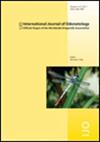巴西热带稀树草原溪流中水生类群的水龙类群
IF 1
4区 农林科学
Q3 ENTOMOLOGY
引用次数: 1
摘要
环境管理是当前生态保护中最重要的活动之一。面对各种社会经济影响(如城市化、农业和伐木),分析和确定生物多样性如何受到这些人为活动的影响的实用有效方法至关重要。利用生态位理论有助于理解相似的生物群体如何对环境变化做出反应,这是基于具有某些生态位重叠(即相似资源)的生物将对这些变化做出相似反应的假设。Ododata目的成员由于其调查成本低、分类鉴定相对容易以及对环境变化的敏感性而经常被用作生物指标。在本研究中,我们使用PROEST方法分析了巴西稀树草原溪流中Ododata与两种水生生物Gerromorpha和鱼类之间的跨分类单元一致性。尽管水生昆虫之间存在一致性(~45%),但当我们只考虑物种的属时,这一结果发生了变化:水生昆虫没有发现一致性,但我们发现了Ododata和鱼类之间的一致性(约44%)。由于Ododata在不同的分类分辨率上与其他类群表现出一致性,并且它是一个相对容易和廉价的类群,我们建议Ododata可以作为这组生物受到干扰的指标,因此可以作为传统环境管理技术的替代方法。本文章由计算机程序翻译,如有差异,请以英文原文为准。
Odonata Concordance amongst aquatic taxa in brazilian savanna streams
Environmental management is one of the most important activities in ecological conservation at present. Faced with various socioeconomic impacts (e.g., urbanization, agriculture, and logging), practical and effective ways to analyze and determine how biodiversity is affected by these anthropogenic activities are essential. Utilizing niche theory helps to understand how similar groups of organisms respond to environmental changes based on the assumption that organisms with some niche overlap (i.e., similar resources) will respond similarly to these changes. Members of the order Odonata are frequently used as biological indicators due to their low survey costs, relatively easy taxonomic identification, and sensibility to environmental changes. In this study, using the PROTEST method, we analyze the cross-taxon congruence between Odonata and two aquatic organisms in Brazilian savanna streams: Gerromorpha and fishes. Although congruence was found between aquatic insects (~ 45%), this result changed when we only considered the species’ genera: no congruence for the aquatic insects was found, but instead we found a congruence between Odonata and fishes (~ 44%). Since Odonata showed congruence with the other groups in different taxonomical resolutions and it is a relatively easy and cheap group to collect and identify, we suggest that Odonata could be used as an indicator of disturbance for this set of organisms and hence serve as an alternative method to traditional environmental management techniques.
求助全文
通过发布文献求助,成功后即可免费获取论文全文。
去求助
来源期刊

International Journal of Odonatology
ENTOMOLOGY-
CiteScore
2.30
自引率
0.00%
发文量
15
审稿时长
>12 weeks
期刊介绍:
International Journal of Odonatology (IJO) is aimed at providing a publication outlet for the growing number of students of Odonata. It will address subjects such as the ecology, ethology, physiology, genetics, taxonomy, phylogeny and geographic distribution of species. Reviews will be by invitation, but authors who plan to write a review on a subject of interest to the journal are encouraged to contact the editor.
 求助内容:
求助内容: 应助结果提醒方式:
应助结果提醒方式:


